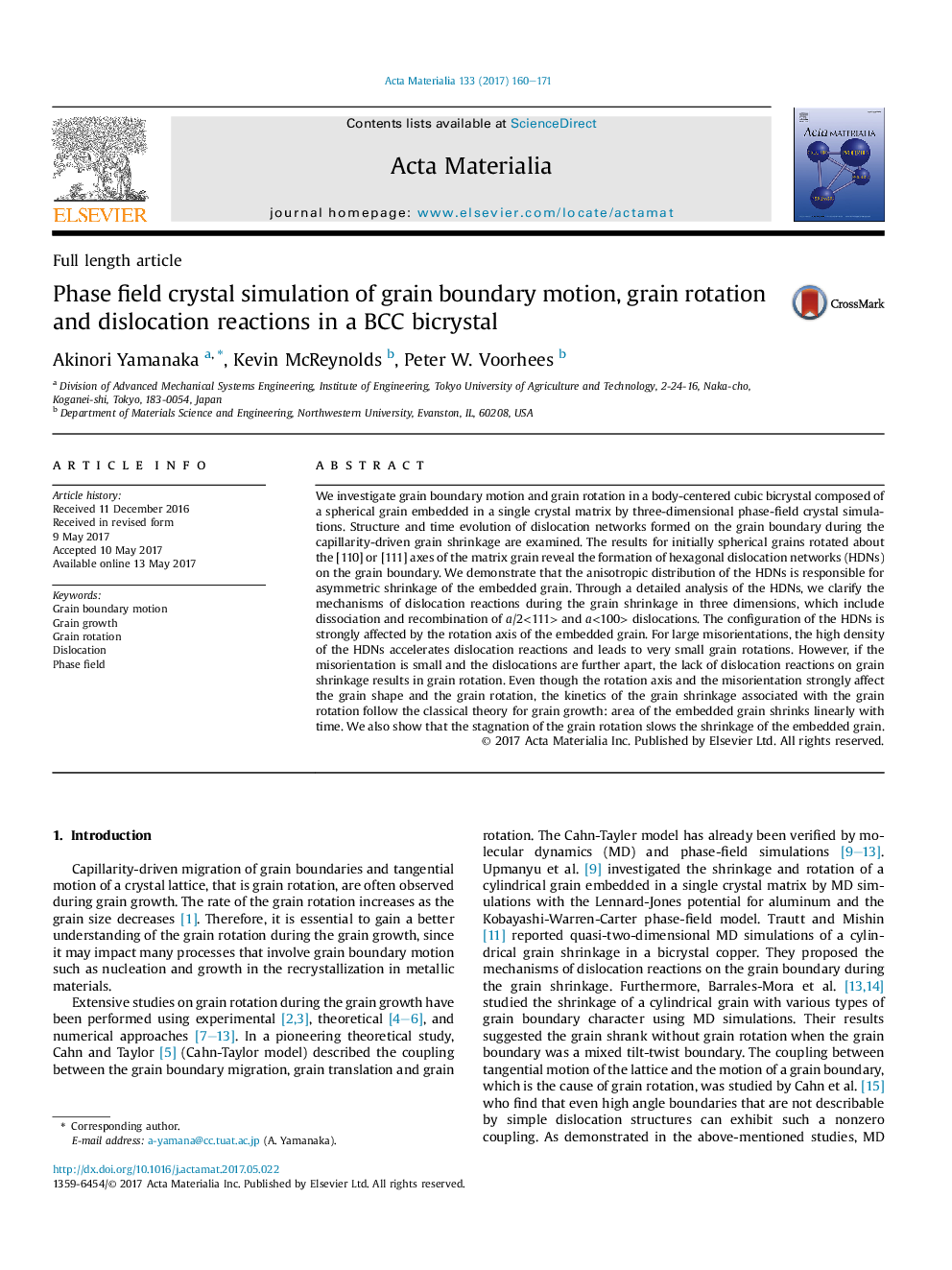| Article ID | Journal | Published Year | Pages | File Type |
|---|---|---|---|---|
| 5436066 | Acta Materialia | 2017 | 12 Pages |
We investigate grain boundary motion and grain rotation in a body-centered cubic bicrystal composed of a spherical grain embedded in a single crystal matrix by three-dimensional phase-field crystal simulations. Structure and time evolution of dislocation networks formed on the grain boundary during the capillarity-driven grain shrinkage are examined. The results for initially spherical grains rotated about the [110] or [111] axes of the matrix grain reveal the formation of hexagonal dislocation networks (HDNs) on the grain boundary. We demonstrate that the anisotropic distribution of the HDNs is responsible for asymmetric shrinkage of the embedded grain. Through a detailed analysis of the HDNs, we clarify the mechanisms of dislocation reactions during the grain shrinkage in three dimensions, which include dissociation and recombination of a/2<111> and a<100> dislocations. The configuration of the HDNs is strongly affected by the rotation axis of the embedded grain. For large misorientations, the high density of the HDNs accelerates dislocation reactions and leads to very small grain rotations. However, if the misorientation is small and the dislocations are further apart, the lack of dislocation reactions on grain shrinkage results in grain rotation. Even though the rotation axis and the misorientation strongly affect the grain shape and the grain rotation, the kinetics of the grain shrinkage associated with the grain rotation follow the classical theory for grain growth: area of the embedded grain shrinks linearly with time. We also show that the stagnation of the grain rotation slows the shrinkage of the embedded grain.
Graphical abstractFigure optionsDownload full-size imageDownload high-quality image (283 K)Download as PowerPoint slide
